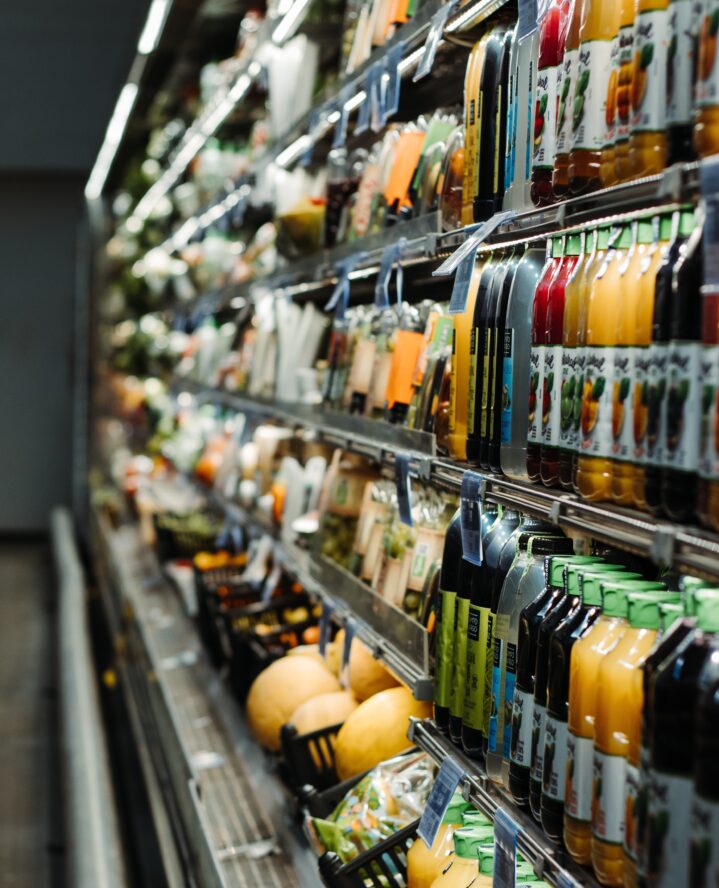Have you ever come across a condiment in the fridge or fished out a forgotten pack of some seasonal delicacy from the back of your pantry only to discover it was past its “use by,” “best by,” or some other suggestion that it was past its prime? And then, did you roll the dice and consume it anyway? Guilty. You may think that all of the food labels mean the same thing, but it turns out—nope, they are indeed not created equal. It seems like a complex, cryptic puzzle, but it’s time to demystify exactly what they mean once and for all. Here is some clarity around food labels and what they mean so you know what to keep and what to toss.

Best By: The Peak of Freshness
These labels are commonly found on a variety of packaged foods, and they’re like a gentle nudge from your food item, encouraging you to enjoy it at its absolute peak of freshness and flavor. “Best By” dates are more about quality than safety. So, when that date has come and gone, your cereal might lose a bit of its crunch, or your canned soup might not be as savory, but rest assured, they are still more than likely safe to consume.
Use By: The Grim Expiration Date
The “Use By” label is a stern warning from your food item, saying, “Hey, consume me by this date, or things could get risky.” You’ll often find these on perishable items like dairy products and meats. Beyond the date, you may be venturing into the uncharted waters of spoilage and potential food-borne illnesses, so it’s wise to proceed with caution and not let these dates slip by unnoticed.
Sell By: A Retailer’s Reminder
Unlike the previous two, this date is more for the retailers than consumers. When you see a “Sell By” date on a product, it’s essentially a signal to the store to have it off their shelves. You can often find perfectly edible items with a “Sell By” date if you act swiftly, making this label less of a concern for the average consumer.
Expires On: The Final Countdown
Lastly, there’s the “Expires On” date, which leaves no room for ambiguity. It’s a clear-cut deadline, and consuming the item beyond this point may not be the wisest decision. You’ll typically find this label on items where safety is of utmost importance, such as medications and baby formula. When it says it expires on a certain date, it means just that – it’s time to bid adieu.

Where Did Food Labels Come From?
The concept of food labeling dates back centuries, with early civilizations marking their products in rudimentary ways. Ancient Egyptians, for example, used hieroglyphics to label jars of grain and other commodities. These inscriptions not only identified the contents but also provided important information about the origin and quality of the products.
During the Middle Ages, European cities began implementing food regulations. In England, for instance, the Assize of Bread and Ale was enacted in the 13th century, setting standards for the quality of bread and ale and requiring bakers and brewers to mark their products with distinctive stamps.
Fast forward to the 19th century, and we see the dawn of modern food labeling. With the rise of industrialization and mass production, there was a pressing need for standardized labeling to protect consumers and ensure product quality.
Modern Food Labeling
In the 1970s, manufacturers widely embraced date labels as a response to growing consumer concerns about product freshness. As people became increasingly aware of the need to make informed choices about the foods they consumed, date labels such as “Best By” and “Used By” emerged as valuable tools.
These labels not only helped consumers gauge the quality and safety of their purchases but also provided a sense of transparency and trust between manufacturers and consumers. This pivotal shift in the food industry’s approach to labeling marked a significant step toward enhancing food safety and ensuring that consumers could enjoy their products with confidence.
popular posts
- 1It’s Black Business Month, So Let’s Go Shopping and #BuyBlack!
- 2These Home Decor Items Will Instantly Make Your Space Look Outdated
- 3Black-Owned Home Decor Stores To Support Across the United States
- 4A Look Inside Elon Musk's Tiny $50,000 House
- 57 Black and Multicultural Designers To Follow For Design Inspo
Kitchen

Unique Backsplash Ideas That Add Luxury to Your Kitchen
by Stephanie Taylor | January 19, 2023

These 5 Kitchen Tools Will Up Your Culinary Experience
by Arielle Clay | January 19, 2023
Spaces
Whether it’s luxury or ease, every area of your home should be as fabulous and unique as you.
Add to Cart: All The Best Savings on Home Kitchen Appliances
by Kelsey Marie | February 24, 2023
These Outdoor Kitchen Ideas Will Make Dining Al Fresco A Treat
by homeandtexture | February 27, 2023
FOLLOW ALONG ON INSTAGRAM
#homeandtexture
Find us on social for more home inspiration where culture, personal style, and sophisticated shopping intersect to help you create a home where you love to live.






